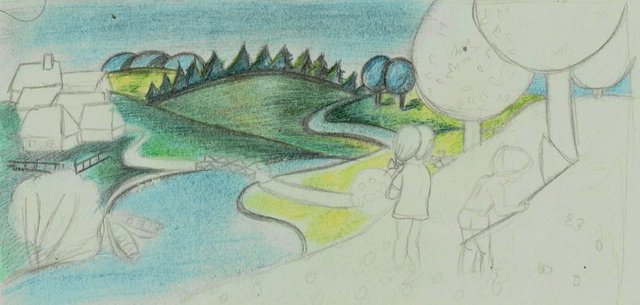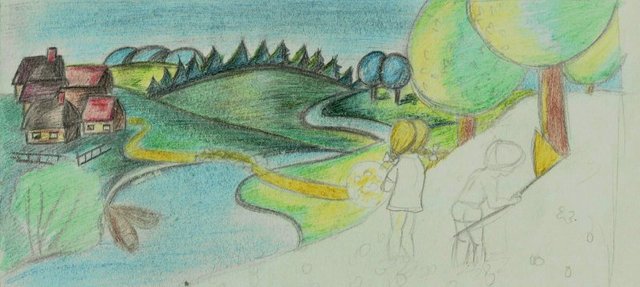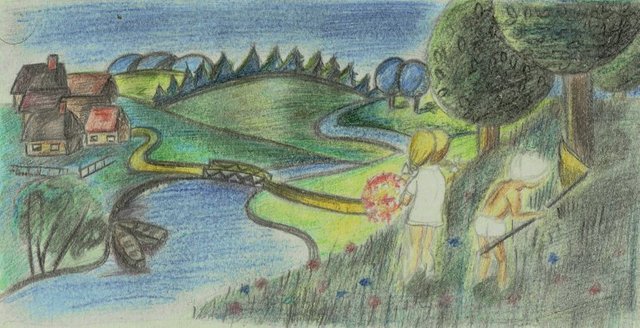My Art of Astronomy: Why Is There Summer and Winter? (Part 7, includes step-by-step drawing as a bonus!)
In the summer the Sun is high in the sky. The days are long and warm. But in the winter the Sun is low. The days are short and cold. Why does that happen?


The Earth is one of the Sun's satellites which means that the Earth moves around the Sun. It takes the Earth exactly one year to make this journey.

The Earth is divided into two halves, a northern half and a southern half. These are called the Northern Hemisphere and the Southern Hemisphere. When the Earth is in the position shown in the top drawing, the Northern Hemisphere receives more sunlight and it is summer for the people living there. It is winter in the Southern Hemisphere then.

Six months later the Earth has turned and the Northern Hemisphere is away from the Sun, as shown in the lower drawing. Then it receives less sun and it is winter there. But in the Southern Hemisphere it is summer.
How I Draw.
I use the first picture as an example.
1. First and foremost, make a simple sketch of our picture.

2. Using a blue pencil gently shade areas designated for water and the sky.

3. Make the tone deeper using a darker pencil.

4. Highlight the lines of the sketch by darkening.

5. Add green and yellow colors to the fields. Use gentle shades.

6. Color the trees on the background using the marine pencil.

7. Darken the hills with gray and black pencils.

8. Darken the spruces as well.

9. Add light shades to trees on the foreground. The closer to the light, the lighter the shades.

10. Gentle shades on boats and houses – red and brown colors.

11. Darken houses with regular pencil. Add some green to the tree near the river and color all yellow objects.

12. Darken boats, the tree, and the river using regular pencil.

13. Darken the road and highlight the bridge using regular pencil.

14. Add shades to the closest hill.

15. Darken trees and hills with gray color and shade the bouquet.

16. Color the bodies. Use orange, yellow, and brown colors.

Finish the picture adding last shades and darkening and balancing colors where needed.
17. The last step. Draw the border and play with filters to apply color correction and make it look like a pastel drawing.

wow
Amazing work, @senseye!
Awesome! I think art detailing is important, I will inform the Curie team to consider better rewarding such a process :)
Agreed. This is a beautiful post, @senseye. Keep them coming. I especially love the orbit illustrations!